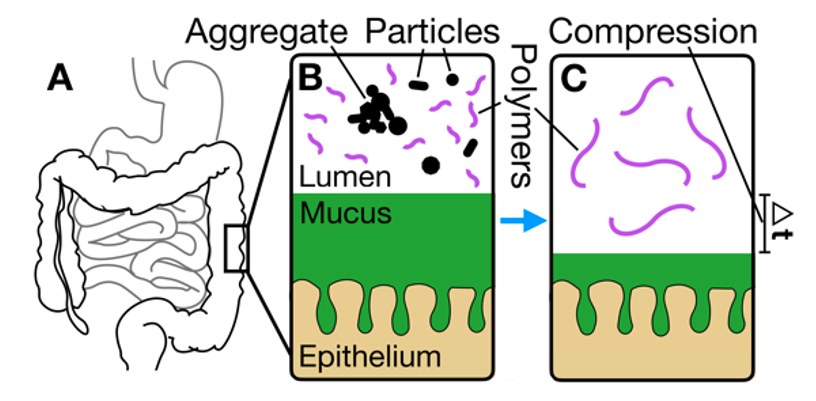gut polymer physics
can we use physics to predict how polymers in our diet shape the gut environment?
During my PhD thesis work, I focused on elucidating how polymers in the human diet influence gut structure and function through physicochemical interactions. The human gut abounds in both secreted polymers (e.g., mucus, proteins) and ingested polymers (e.g., dietary fibers, food additives, therapeutics). These polymers affect the composition of the gut microbiome and diseases such as inflammatory bowel disease, yet the underlying physics by which these polymers alter gut physiology is not well understood. We studied this through a combination of experiments and numerical calculations. Despite the complexity of the gut, we were able to develop a coarse-grained, statistical physics approach for understanding how dietary polymers impact physiology, which enabled quantitative predictions based on measurables such as polymer size and concentration. Specifically, we found that dietary polymer-induced osmotic forces can compress colonic mucus and influence the aggregation of particles in the gut (see publications page from years 2016-2019). Both mucus compression and aggregation have implications regarding altered protection against pathogens and drug uptake. Overall, my thesis work with the Ismagilov Lab yielded a quantitative, biophysical understanding of how polymer-driven osmotic forces, which shape gut physiology, can be tuned by the host, microbiota, and diet.
